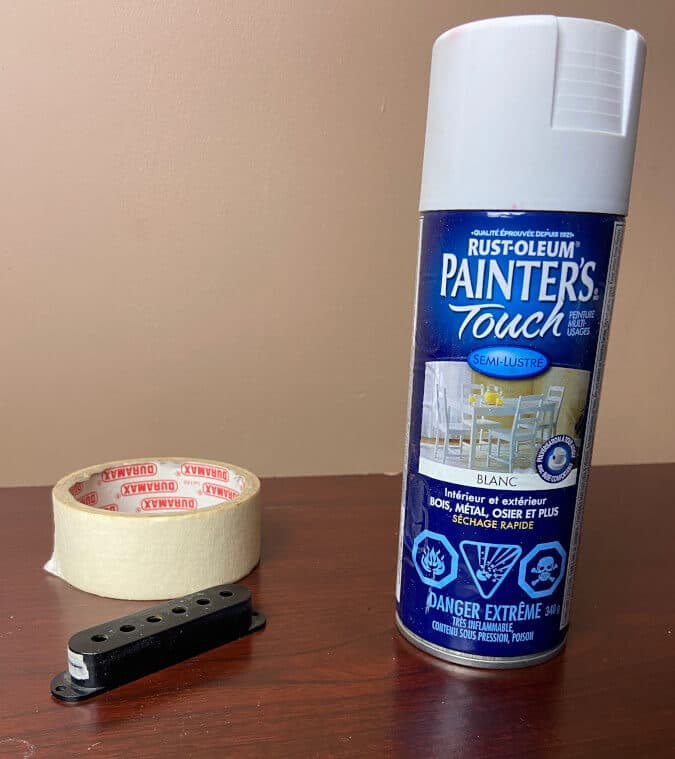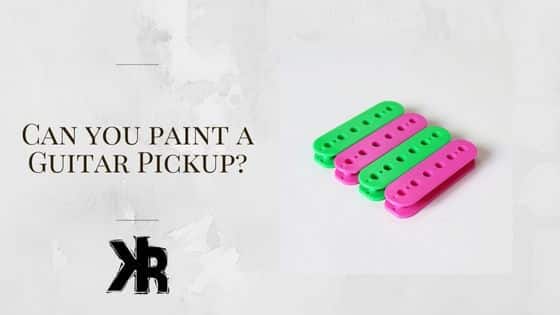Table of Contents
Guitar pickups play a crucial role in determining the sound of an instrument. But they can also contribute to its appearance and look.
Painting guitar pickups can add a touch of customization and style. This will make it stand out from the crowd. But can guitar pickups be painted?
Guitar pickups can be painted with the right preparation and supplies. If you prepare the surface correctly, the paint will adhere. This will provide a long-lasting finish. But without proper preparation, it will only scratch off or look bad.
The purpose of this article is to explore the possibilities of painting guitar pickups. We will guide you through the process of painting them. Now, let’s get you that desired look for your guitar!
Can Guitar Pickups be Painted?
Painting guitar pickups can add a personal touch and style. But it’s important to consider the potential drawbacks as well.
On the one hand, painting pickups can improve the appearance of an older instrument. It can also customize the look of a new guitar. And don’t worry, it’s safe to paint pickups!
On the other hand, painting pickups can also turn out to look very bad! Especially if you don’t take the time needed to properly perform the task. Before deciding to paint them, it’s important to consider the type of pickup. But also the type of paint to use.
Single-coil pickups, for example, are typically easier to paint than humbuckers. Some paints are made for certain materials like plastics.
Then the prep work that must be done to get the best outcome. The goal is to have a smooth, good-looking paint job that will take a bit of a beating.
Related: Choosing the Best guitar color.
Guitar Pickup Painting Materials
Having the right paints will not only provide a better look, but the durability too. Pickups are made from plastic, and so it’s important to use paint made for it.
This way it will adhere and remain much better. Here is what we recommend, you just need to decide on the color.
Primer
Primer is important because it will give the paint a better surface to stick to. It will also make the coating more durable.
This way, the paint has a better chance of enduring impacts. Instead of chipping off, it will remain in most cases. Depending on how hard it gets hit, of course! I recommend the Rust-Oleum plastic primer.

Paint
The right paint is also critical. Again, something for plastic is your safest choice. Just choose the right color and use it.
The primer will help most paints stick, so you can try a few to see how they do. But just make sure they are made for plastic. At the very least, will stick to it! We recommend Rust-Oleum paint.
Clear Coat
This part is optional and can be skipped. Clear coat isn’t necessary, but can add a layer of durability to protect the paint. It will harden over it, which is great.
Especially considering the position of the pickups. It doesn’t take much to scrape the paint with a pick.
Painting Guitar Pickups: Steps and Process
Single-coil pickups normally have a removable cover. It can be separated from the rest of the assembly.
If you are able, take it off to prevent paint from getting into places it should not. This alone makes them easier to paint than hunbuckers.
Keep in mind that you can also get colored pickup covers for single coils. If you are not up to the task of painting them, this is an easier way of getting your desired look. If you want to paint, here are the steps to take!

1.Preparation
The first step in painting guitar pickups is preparation. This includes removing the pickup from the guitar and cleaning it. Make sure the surface is cleaned of all gunk that might be stuck to it.
Next, we need to sand the surface to rough it up. This helps the paint adhere better to the pickup and ensures a smooth and even finish. You can use a fine sandpaper for this, nothing too aggressive.
You will want to tape all screws and areas that should not be painted. If you are just painting the cover, you can skip this step.
But if it’s a humbucker, then you need to pay great attention to this detail. Paint will get everywhere that there is no tape. If you leave small gaps, it will get through.
Use small circle pieces of tape to get the most natural look for the screws and metal poles. The better the job you do in this phase, the nicer it will look. So spend some time doing it right!
2.Painting Process
The next step is the painting process. This includes applying primer, paint, and a clear coat. The clear coat however is optional and not necessary.
It’s important to follow the manufacturer’s instructions for the primer and paint. Allow each coat to dry completely before applying the next.
Begin with the primer. Shake the can if required and practice on some scrap paper. Get a feel for the spray and the movement of your hand.
Practice getting a smooth finish without drips. Once you feel confident with your work. Proceed to spray the pickup surface.
Once the primer is applied and has dried properly, do the same with the paint. Get a feel for the spray and make sure it is coming out properly.
Again, we don’t want any imperfections. Apply as many coats as is needed to get the best finish and look. The color choice will determine most of this.
Finally, if you’re using a clean coat, wait until the paint has dried and set. Don’t rush these steps, as you want to get the best result possible. Use the same suggestions to apply the clear coat and then wait for it to harden before moving on.

3.Finishing
Once the paint has dried completely, look for any imperfections. With a very fine sandpaper, you can buff them out normally.
Just make sure it is super fine, or you will scuff the surface. If all looks great, you are ready to finish up.
Remove all the tape and any paint that may have got into areas that it should not. A bit of a cleanup will be needed in some cases. You’re now ready to reinstall the pickup into your guitar!
Maintenance and Upkeep of Painted Guitar Pickups
Proper cleaning of the pickups is important. It will help maintain their appearance and quality over time. This includes wiping them down with a damp cloth. But also avoiding abrasive cleaning products.
In order to protect the paint, you should include a clear coat in your plan. Then, just try and not be too aggressive on them.
Storing the guitars in a safe place is also helpful. For more reasons than just protecting your pickups!
Touching up any chips or scratches that may occur over time is also important. You will want to maintain the aesthetic of the pickups.
To do this, it’s necessary to match the paint color. Then, apply touch-up paint with a small brush. This will keep them looking their best!
Conclusion
Painting guitar pickups is a great way to personalize your instrument! You can really give it a unique look. The process is straightforward, and the results can be very satisfying.
All you really need is proper preparation, the right materials, and some attention to detail! Anyone can paint their pickups and enjoy the results for years to come.
FAQ
Will paint affect the sound quality from a guitar pickup?
A guitar pickup works using magnetism. As long as the paint doesn’t have any metal in it, the sound will not be changed at all.
Anything you put between the strings and pickups just can’t be metallic. So you are safe to paint your pickups as long as this is the case.
Can you paint active pickups?
Yes, you can paint active pickups! Most active pickups like EMGs have a cover over them that is smooth or flat. This makes painting them even easier. Especially when compared to a pickup with exposed pole pieces. They are plastic, so painting them is the same.
Can I paint my pickup covers?
Yes, painting the pickup covers is even easier than coating the whole thing. In most cases, you can simply remove the cover and paint it without having to tape.
Again, just make sure the paint is not electrically conductive or magnetic.

